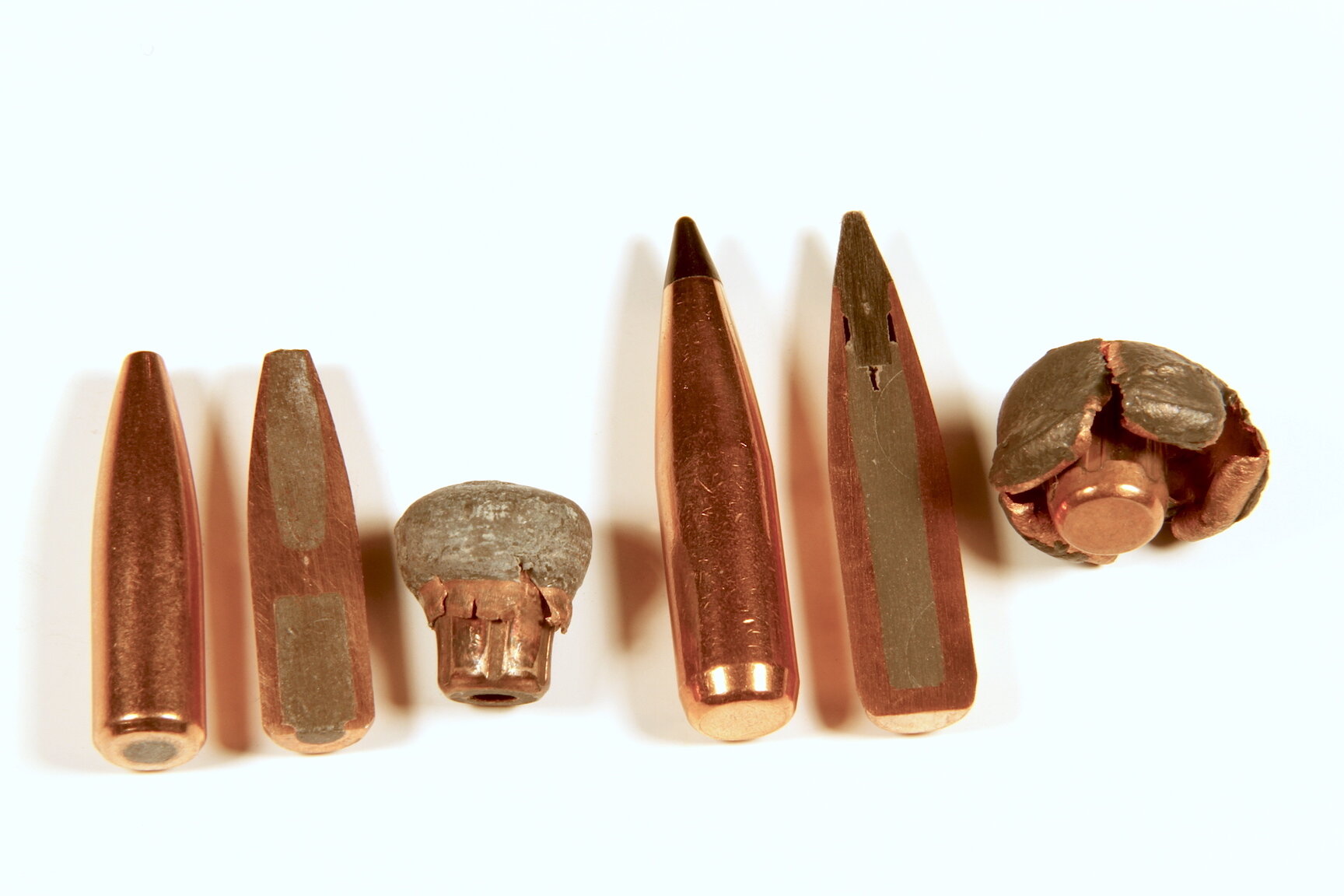Big, Heavy Bullets Matter
Same bullet, different impact velocities, different expansion, different penetration. The wider the frontal area, the less the penetration.
In terminating big game animals, big, heavy bullets matter — just not for the reasons many of us assume.
Big, heavy bullets don’t necessarily kill game faster via “knockdown power.” What they contribute is increased trauma via larger surface area and/or enhanced penetration. In short, heavy bullets CAN (but don’t always) damage more vital organs than can lighter bullets.
As outlined in previous blogs, “knockdown power” is largely wishful thinking. Tissue destruction, ultimately of the brain cells, is what terminates game. This is why broadheads kill so effectively despite carrying virtually no kinetic energy (knockdown power.) They cut tissues, interrupt the flow of blood to the brain and when blood pressure drops, so does the arrowed animal. On the flip side, a buffalo hit in the brain with a 500-grain slug from a 458 Lott dies instantly, but the same thing happens if he’s brained by a 160-grain .264 bullet from a 6.5x55mm Mauser -- or even an arrow. Knockdown power is not at work. It’s destruction of the most vital organ of all, the central nervous system. If those same projectiles were applied broadside through the heart/lungs, there’s no guarantee any would knock the animal down. Tissue destruction is what’s needed here.
Young fallow buck taken during cull operation (note overbrowsed forest) taken with 400-grain Woodleigh from 416 WSM wildcat Kilimanjaro rifle. Bullet entered right rear side in front of leg. You can see it just protruding from skin of lower neck in front of leg. Despite all that mass and power, friction from the expanded nose limited penetration.
So why use big, heavy bullets? To increase tissue destruction. They do it in two ways. First, they can provide increased surface area as they expand. The additional frontal surface area of, say, a 35-caliber bullet vs. a 25-caliber (0.100” difference) doesn’t amount to much, but if a 25-caliber (from a 257 Roberts, 25-06, etc.) mushrooms to twice its caliber, it would expand from .25-inch to .50-inch. That’s expanding from a quarter of an inch in diameter up to a half-inch, a significant increase in surface area. A .308 expanded double diameter carves with a .616-inch frontal area. Wider wound channel, more tissue damage.
This kind of expansion sounds great until you realize it reduces penetration due to friction. The drag of a broadly mushroomed bullet can prevent it from passing through the target. Instead of cutting and tearing blood vessels in two lungs, it might only impact one. In a worst-case scenario, it might not punch through the shoulder and reach even the first lung. So here is the second way a heavy bullet can enhance performance:
If a bullet’s weight is primarily in its length rather than width, there’s a much better chance that it will remain intact behind an expanded nose to continue pushing it forward. It’s something like a scrum in rugby. If you put more or heavier players behind the front row, they add mass, energy and momentum.
Broad frontal area of 400-grain Woodleigh Weldcore increases drag, decreases penetration.
Back side of Weldcore shows that about half of the bullet's mass remained behind the expanded nose. Less expansion and more shank mass would have resulted in more penetration -- which might matter on a large animal like a moose or buffalo.
Bullet weight, then, isn’t by itself going to guarantee deep penetration and more significant vital tissue damage.A balanced combination of reasonable expansion and a heavy shank is the ticket. Long, narrower bullets out-penetrate short, fat bullets of the same mass with the same expanded frontal area (mushroomed nose.)
This is what bullet makers try to accomplish with “controlled expansion” bullets. Through a combination of materials and construction (matched to anticipated impact velocities,) they design for 1.5X to 2X expansion of the nose accompanied by a long, heavy shank to drive that mushroomed nose forward.
Whether this “perfect” bullet punches through the opposite hide or stays inside the animal’s body has little or no effect on “knockdown power.” But this leaves another question hanging out there: why do bullets at extremely high impact velocities often drop big deer and even elk in their hoof prints? We’ll cover that explosive topic in an upcoming blog.
Bullet materials and construction influence expansion and potential penetration. Swift A-Frames on left limit expansion via internal wall. Bonded Swift Sciroccos expand more because one-piece, soft lead core is free to peel back clear to its heel. Bonding insures jackets and cores remain together.
# # #
















